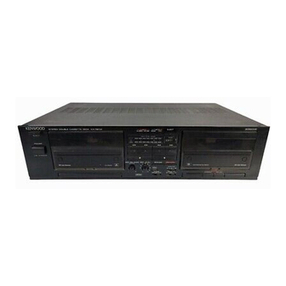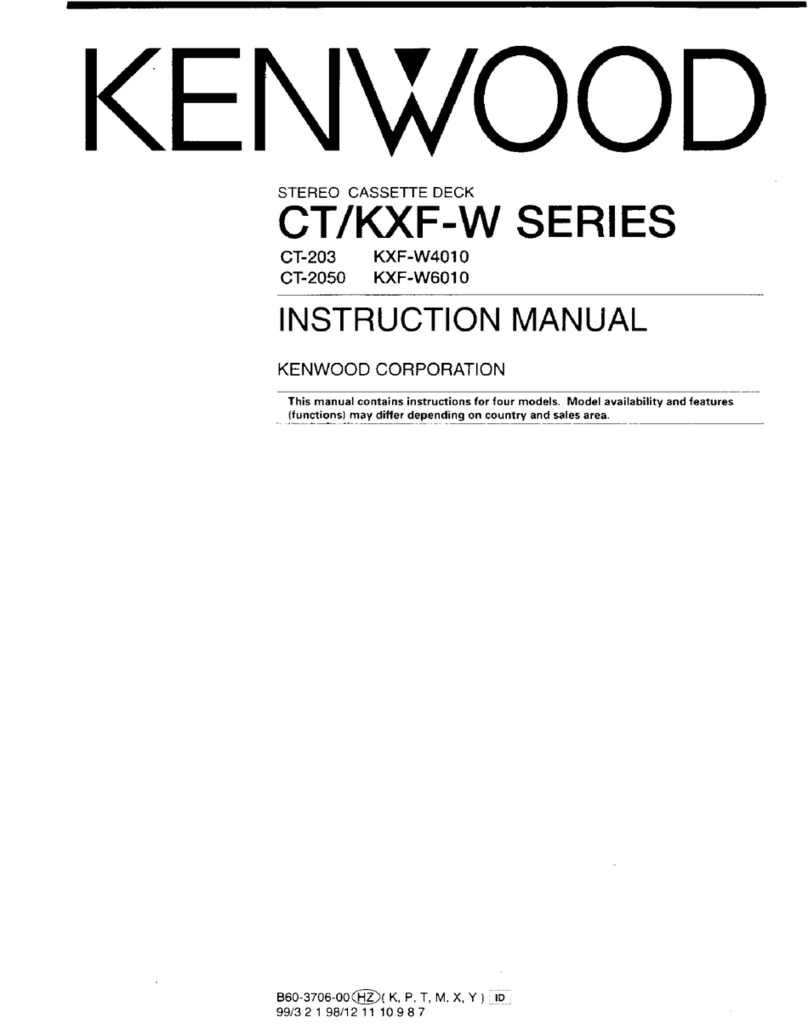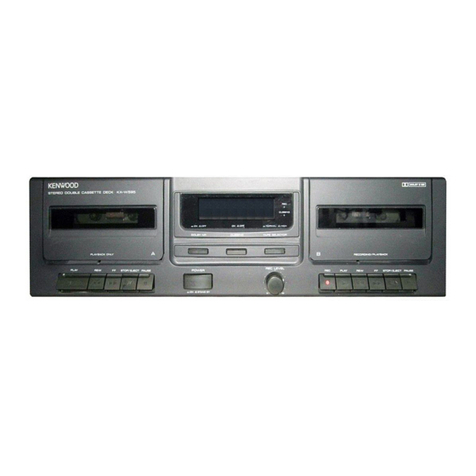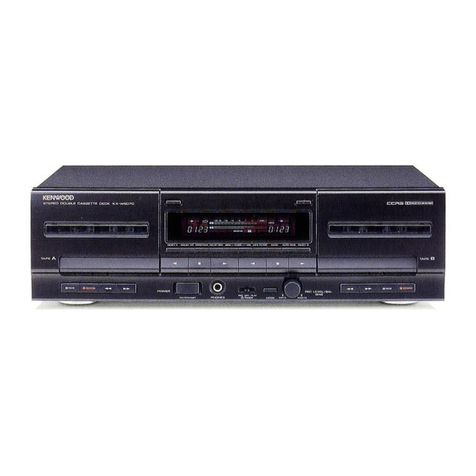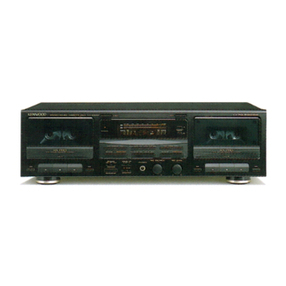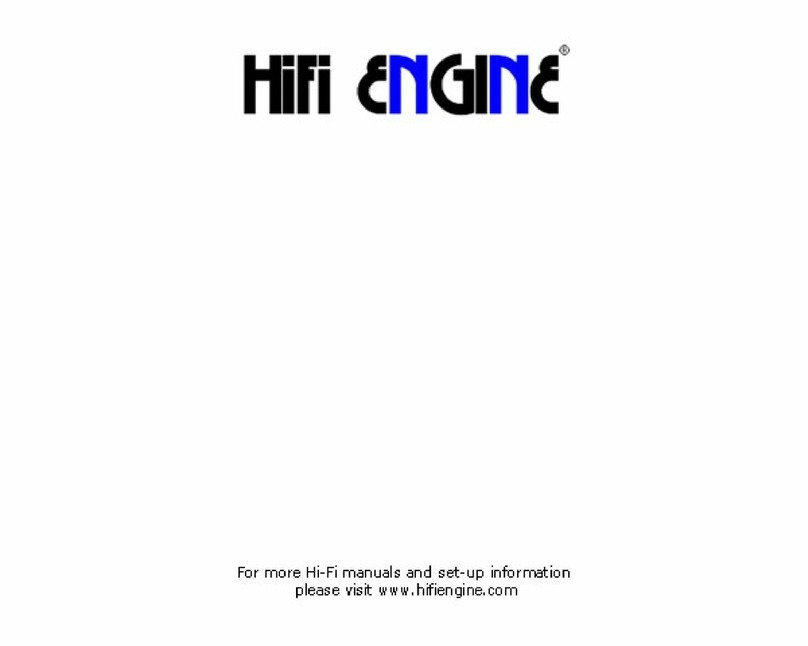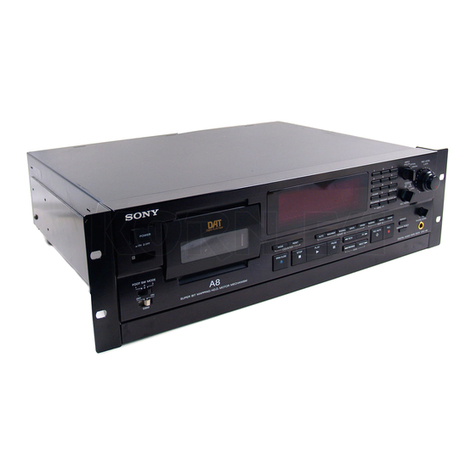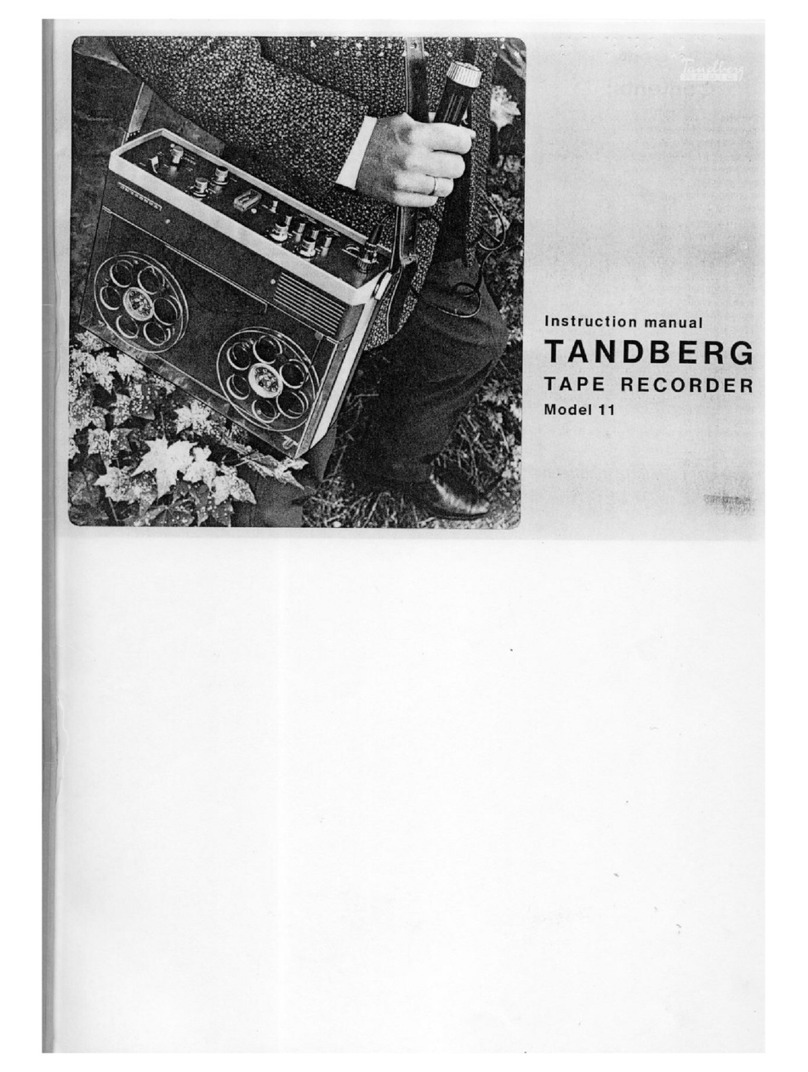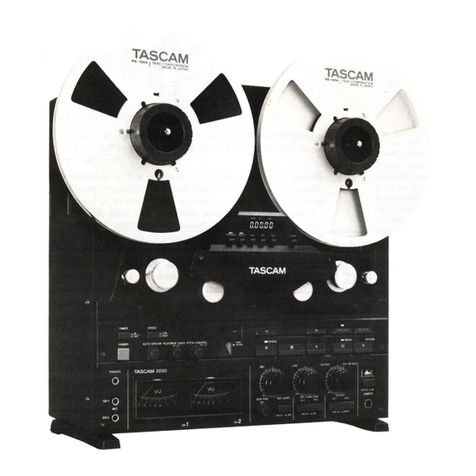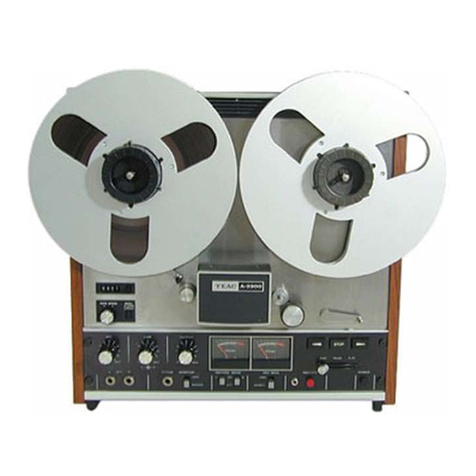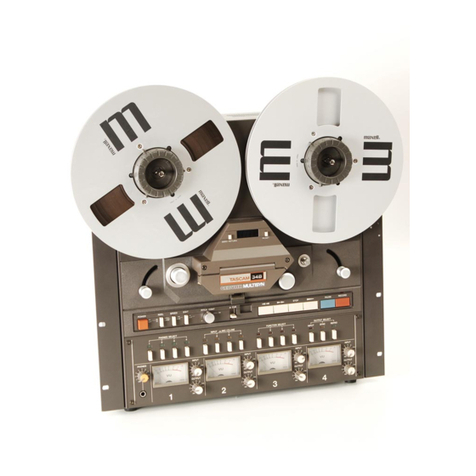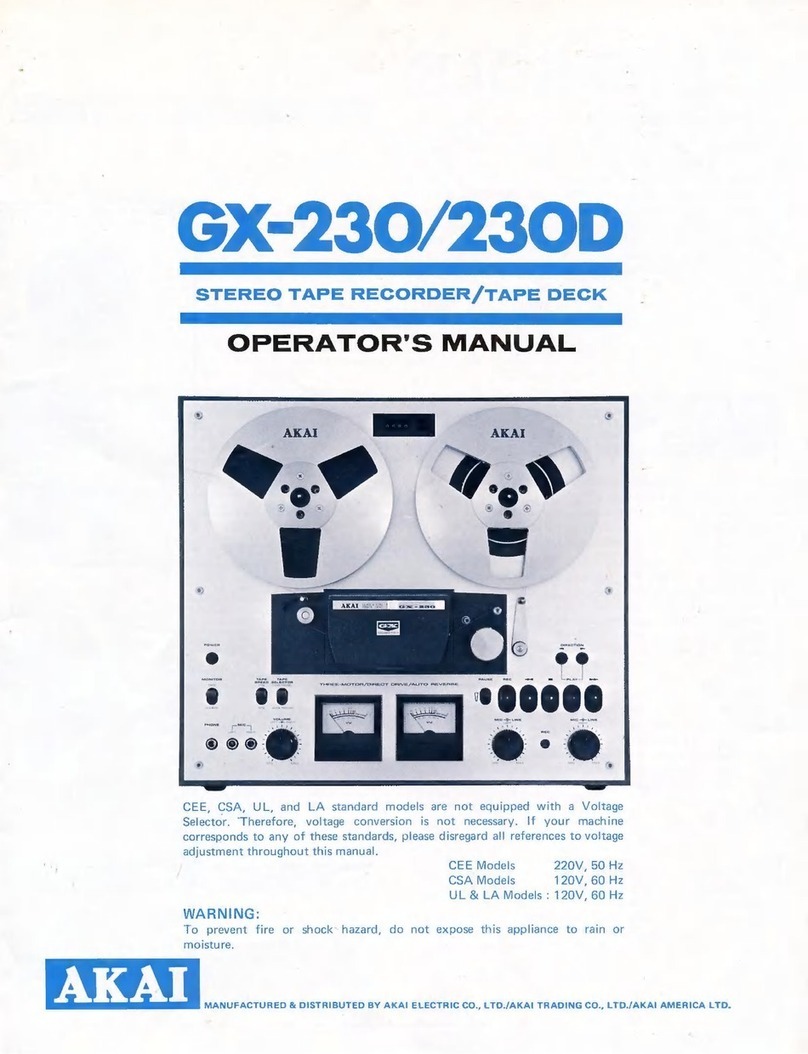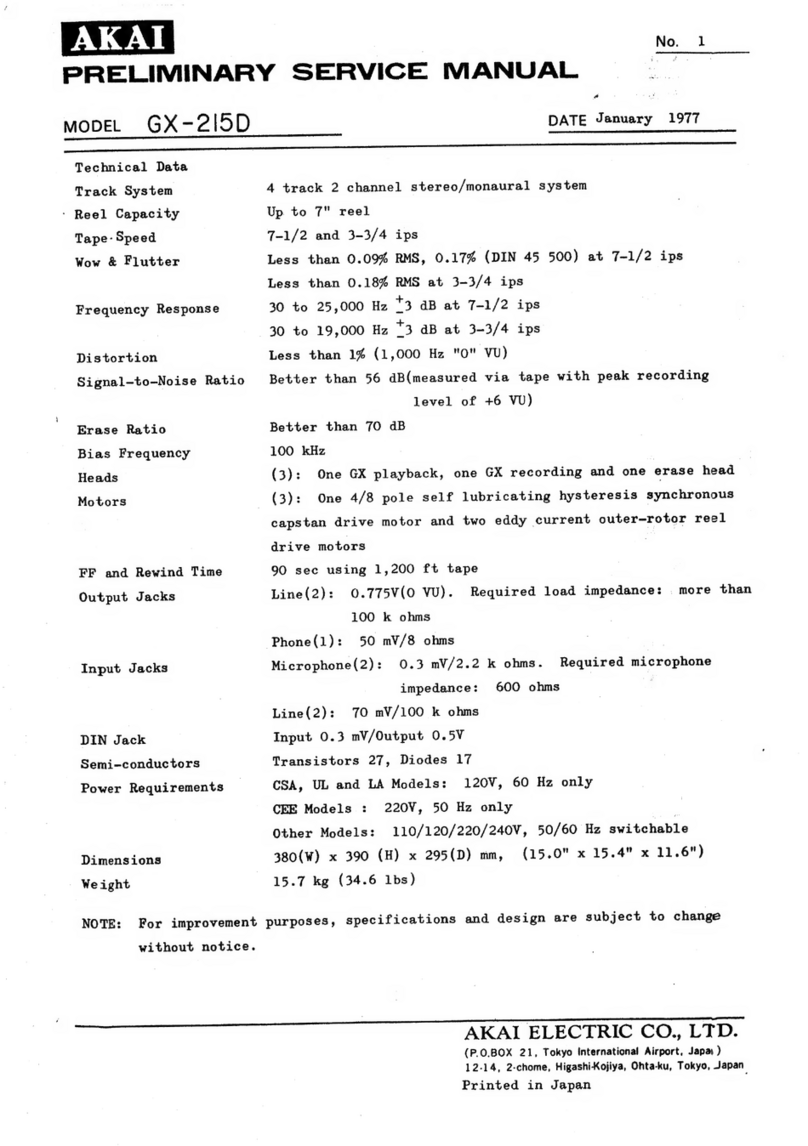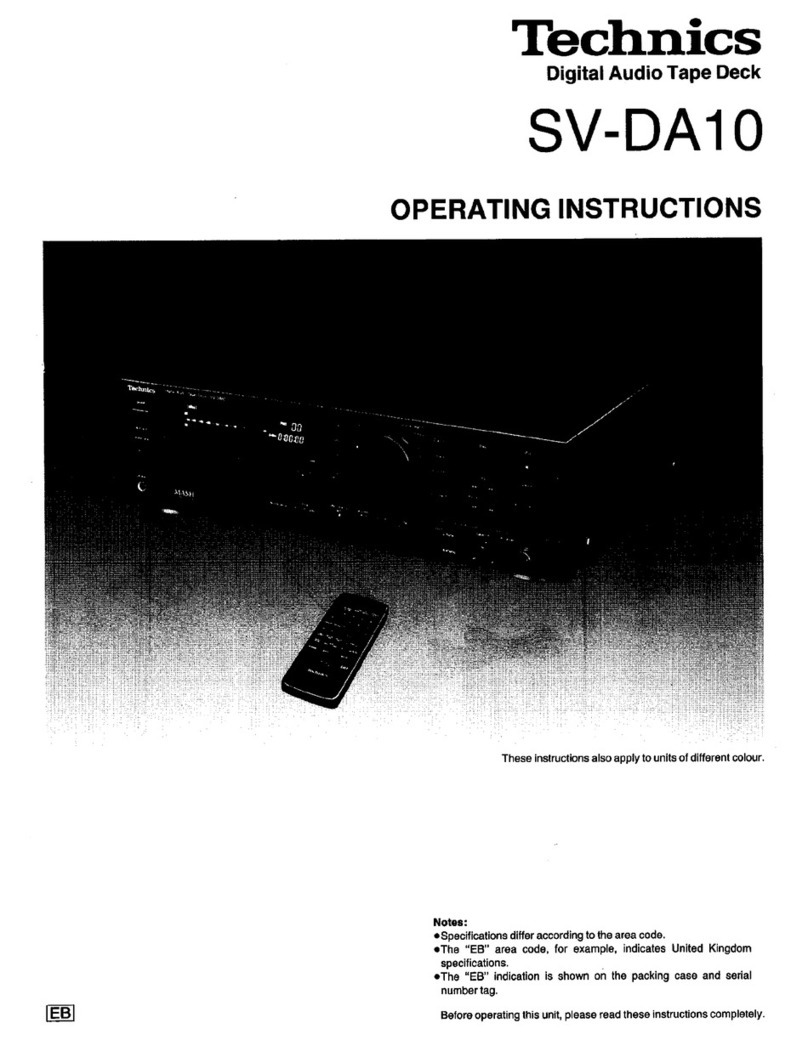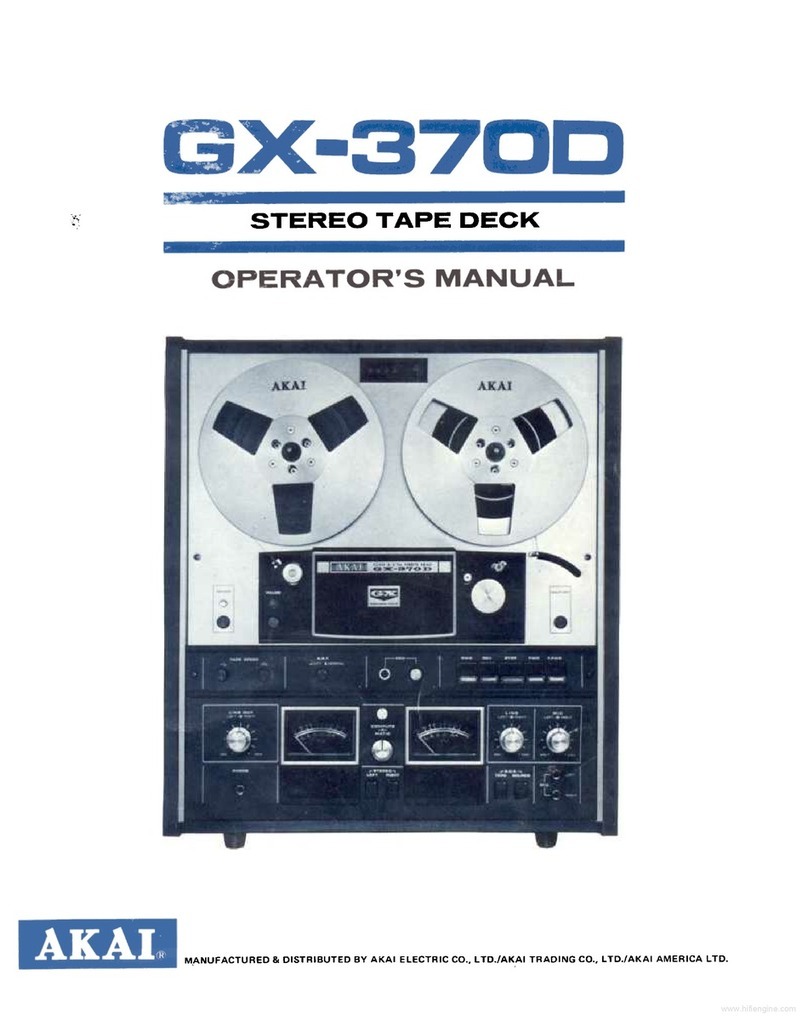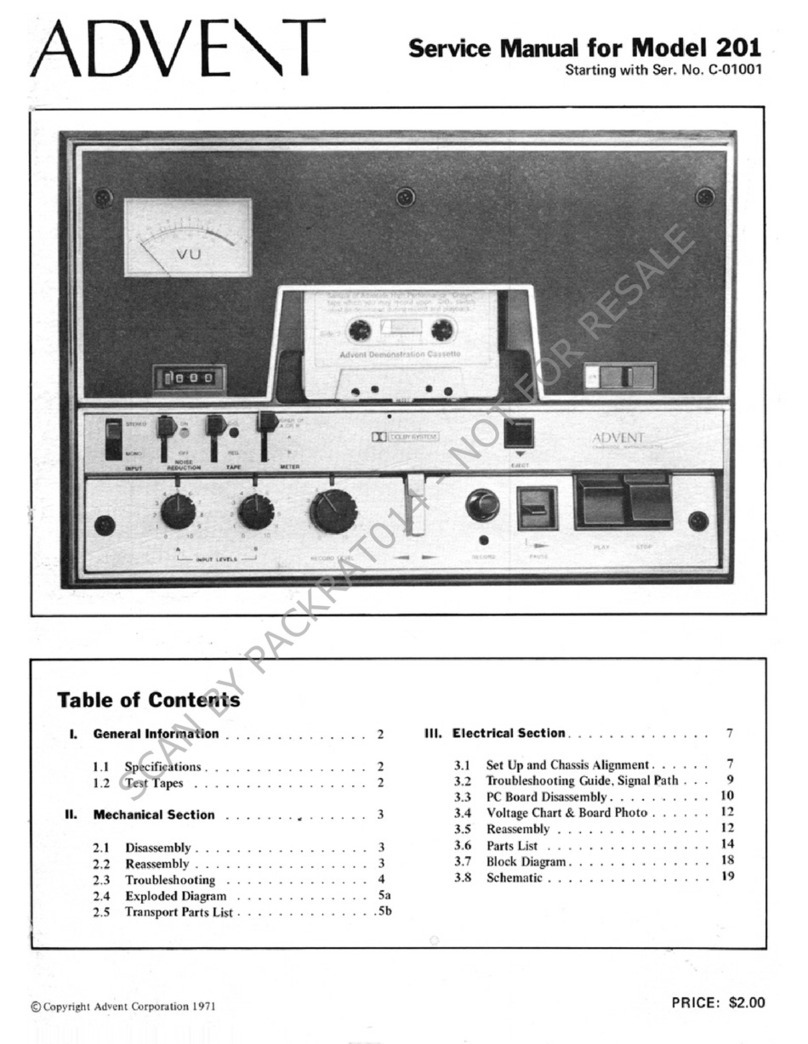
STEREO
CASSETTE
TAPE
DECK
KX-77CW
KENWOOD
INSTRUCTION
MANUAL
©PRINTED
IN
JAPAN
B50-8960-00(K,P,U,UE,M,X,E)(A)
88/12
1110987654321
Introduction
Your
choice
of
this
product
indicates
that
you
are
a
de-
votee
to
excellence
in
souna
reproduction.
We
appreciate
your
patronage
and
take
pride
in
the
long
tradition
of
quality
components.
So
that
you
can
get
the
most
out
of
your
unit,
we
sug-
gest
that
you
take
the
time
to
read
through
this
manual
before
you
hook
up
and
operate
your
system.
This
will
acquaint
you
with
operating
features,
and
system-con-
nection
considerations,
so
that
your
listening
pleasure
will
be
enhanced
right
from
the
start.
You
will
notice
that
in
all
aspects
of
planning,
engineering,
styling,
operating
convenience
and
adaptability,
we
have
sought
to
anticip-
ate
your
needs
and
desires.
Keep
this
manual
handy
for
future
reference.
For
your
records
Record
the
serial
number,
found
on
the
back
of
the
unit,
in
the
spaces
designated
on
the
warranty
card,
and
in
the
space
provided
below.
Refer
to
the
model
and
serial
numbers
whenever
you
call
upon
your
dealer
for
infor-
mation
or
service
on
this
product.
Model
KX-77CW
Serial
Number
Unpacking
Unpack
the
unit
carefully
and
make
sure
that
all
acces-
sories
and
cables
are
put
aside
so
they
will
not
be
lost.
Examine
the
unit
for
any
possibility
of
shipping
damage.
If
your
unit
is
damaged
or
fails
to
operate,
notify
your
dealer
immediately.
If
your
unit
was
shipped
to
you
di-
rectly,
notify
the
shipping
company
without
delay.
Only
the
consignee
(the
person
or
company
receiving
the
unit)
can
file
a
claim
against
the
carrier
for
shipping
damage.
We
recommend
that
you
retain
the
original
carton
and
packing
materials
for
use
should
you
transport
or
ship
the
unit
in
the
future.
Contents
Z\Before
applying
power
A\Safety
precautions
AX|mportant
safeguards
System
connections
Connections,
indicators
and
connectors
Tape
playback
WARNING
NOTICE:
IN
MOST
CASES
IT
IS
AN
INFRINGEMENT
OF
COPY-
RIGHT
TO
MAKE
COPIES
OF
TAPES
OR
DISCS
WITH-
OUT
THE
PERMISSION
OF
THE
COPYRIGHT
OWNERS.
ANYONE
WISHING
TO
COPY
COMMER-
CIALLY
AVAILABLE
TAPES
OR
DISCS
SHOULD
CON-
TACT
THE
MECHANICAL
COPYRIGHT
PROTECTION
SOCIETY
LIMITED
OR
THE
PERFORMING
RIGHT
SO-
CIETY
LIMITED.
DOLBY
and
the
double-D
symbol
are
trademarks
of
Dol-
by
Laboratories
Licensing
Corporation.
Noise
reduction
circuit
made
under
license
from
Dolby
Laboratories
Licensing
Corporation.
Accessories
RCA
Pin-plud
cord).
ciscus
2st
bebe
eta
ee
eres
2
System
control
cord
(Except
for
some
areas)...
0...
eee
ee
eee
1
Caution
:
Read
the
following
pages
marked
Z\
carefully
to
keep
your
safety.
Tape
recording
Timer
stand
by
operation
Maintenance
In
case
of
difficulty
Specifications



